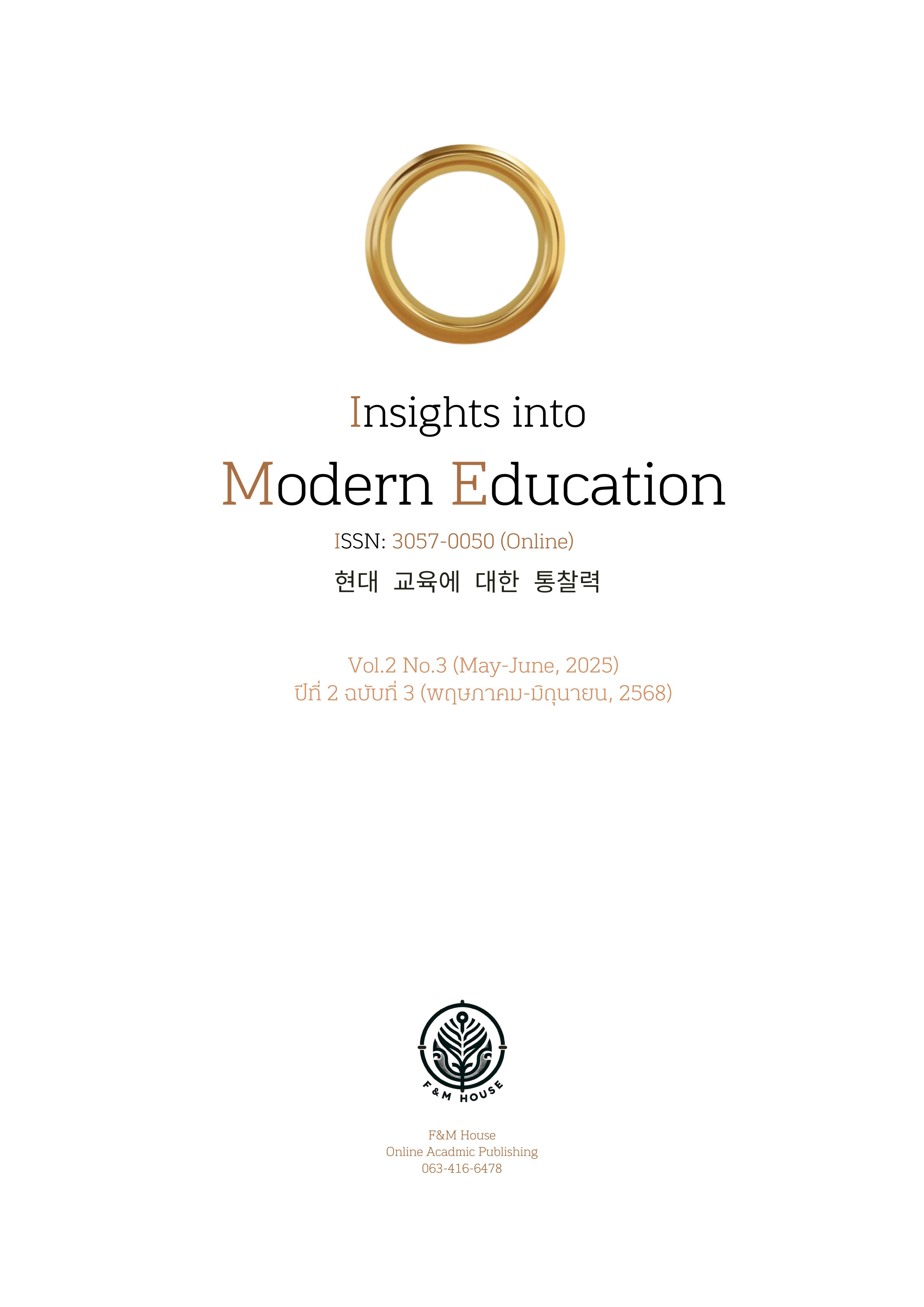The Flipped Classroom Model: A 21st Century Approach to Student Engagement
Keywords:
Flipped Classroom, Active Learning, Student Engagement, Digital Learning, 21st-Century EducationAbstract
This paper explores the Flipped Classroom Model as an innovative pedagogical approach designed to enhance student engagement and learning outcomes in 21st century education. By shifting direct instruction to pre-class activities through digital content, students engage with foundational concepts at their own pace, allowing classroom time to be dedicated to interactive, collaborative, and problem-solving activities. This model aligns with constructivist learning theories, emphasizing active learning, student autonomy, and deep understanding. The study examines the theoretical foundations, implementation strategies, and impact of flipped learning on academic performance, critical thinking, and student motivation. Additionally, the paper discusses challenges such as access to technology, student readiness, and the need for effective teacher training. Through case studies and empirical evidence, the findings highlight the potential of flipped classrooms to create dynamic learning environments that foster self-directed learning, engagement, and higher-order thinking skills. The study concludes by emphasizing the need for ongoing research and adaptive strategies to optimize the effectiveness of the Flipped Classroom Model in diverse educational settings.
References
Afrizal, A., Karyadi, P. A., & Paristiowati, M. (2020). Analysis of the 21st-century skills of students in chemical equilibrium learning with the flipped classroom-collaborative problem-solving model. Retrieved from https://core.ac.uk/download/349542878.pdf
Akour, M., & Alenezi, M. (2022). Higher education future in the era of digital transformation. Education Sciences, 12(11), 784-784. https://doi.org/10.3390/educsci12110784
Alan, S., & Yurt, E. (2024). Flipped learning: An innovative model for enhancing education through ChatGPT. Retrieved from https://core.ac.uk/download/618306072.pdf
Amhag, L., Hellström, L., & Stigmar, M. (2019). Teacher educators' use of digital tools and needs for digital competence in higher education. Journal of Digital Learning in Teacher Education, 35(3), 203-220. https://doi.org/10.1080/21532974.2019.1646169
Amir, M., Hassan, N., & Khalid, U. (2024). Enhancing medical education: A pathway to nurturing future healthcare professionals. Cureus, 16. Retrieved from https://www.semanticscholar.org/paper/8f13d2dfeca9b921526ff4ac94ad3e311cc75971
Anderson, L., Biggs, J., Bishop, J. A., Bryn, H., DeGarmo, E., Euchner, J., & Kalpakjian, S. (2016). Delivering manufacturing technology and workshop appreciation to engineering undergraduates using the flipped classroom approach. Retrieved from https://core.ac.uk/download/30734886.pdf
Asiri, A., Panday-Shukla, P., Rajeh, H., & Yu, et al. (2021). Broadening perspectives on CALL teacher education: From technocentrism to integration. Retrieved from https://core.ac.uk/download/637042966.pdf
Bento, M., Freires, T., Lencastre, J. A., & Morgado, et al. (2020). A systematic review on the flipped classroom model as a promoter of curriculum innovation. Retrieved from https://core.ac.uk/download/344900571.pdf
Birch, R., & Truesdell, E. (2013). Integrating instructional technology into a teacher education program: A three-tiered approach. Retrieved from https://core.ac.uk/download/215552361.pdf
Blackley, S., Goradia, T., Lareu, R. R., & Southam, et al. (2023). The effectiveness of evidence-based teaching practices in biomedical sciences on students’ learning experience: A systematic literature review. Retrieved from https://core.ac.uk/download/578253235.pdf
Bormann, J. (2014). Affordances of flipped learning and its effects on student engagement and achievement. Retrieved from https://core.ac.uk/download/222992995.pdf
Buntting, C. M., Cosslett, G., Falloon, G., & Forret, et al. (2012). Science in the New Zealand curriculum e-in-science. Retrieved from https://core.ac.uk/download/29202276.pdf
Butt, P. (2017). A flipped gamified classroom. Retrieved from https://core.ac.uk/download/161933638.pdf
Camfield, E., & Land, K. (2021). The evolution of student engagement: Writing improves teaching in introductory biology. Retrieved from https://core.ac.uk/download/323082689.pdf
Carhill-Poza, A., & Gounari, P. (2016). Student-centered learning opportunities for adolescent English learners in flipped classrooms. Retrieved from https://core.ac.uk/download/71338649.pdf
Chaerani, D., Harianto, J. E., Baehaqi, L., Frantius, D., & Mulvia, R. (2024). Digital literacy in the 21st-century classroom: Bridging the gap between technology integration and student engagement. Global International Journal of Innovative Research. Retrieved from https://www.semanticscholar.org/paper/ddf28f66652ff05631e1deadd041c6c671e89df0
Daeli, R. (2025). Perceptions of the flipped classroom model in EFL listening instruction: Tutor experiences and implications for teacher education. Linguistics Initiative. Retrieved from https://www.semanticscholar.org/paper/3ea020e1e28be7c0995f4a275bcbefdc70d36274
Darmah, A., Gustian, K., & Rusmawaty, D. (2023). The benefits of flipped classroom model for EFL learners. Retrieved from https://core.ac.uk/download/560351352.pdf
Erlinda, R. (2019). Flipped classroom: An inventive learning approach in engaging 21st-century learners in the digital age. Retrieved from https://core.ac.uk/download/236392945.pdf
Gampala, M. (2023). Innovative approaches to teaching and learning. Shanlax International Journal of English, 12(1), 138-145. https://doi.org/10.34293/rtdh.v12is1-dec.86
Hickman, K. K. (2023). Experiences of middle school teachers implementing the flipped classroom method with lack of student preparedness: A transcendental phenomenological study. Retrieved from https://core.ac.uk/download/588305157.pdf
Hirsto, L., Hyypiä, M., Sointu, E., & Valtonen, et al. (2019). Key components of learning environments in creating a positive flipped classroom course experience. Retrieved from https://core.ac.uk/download/287760929.pdf
Hunter, J., Silvestri, K. N., & Ackerman, M. L. (2018). "Feeling like a different smart": Twitter as digital literacy mediates learning for urban youth and literacy specialist candidates. Retrieved from https://www.semanticscholar.org/paper/5c894adc76f19d68aa76a07e648a851be44bb099
Ibodullayevna, A. S. (2025). Flipped classroom model and cultural approach: Modern teaching strategies for English literature. International Journal of Pedagogics. Retrieved from https://www.semanticscholar.org/paper/93960e57603a53d5b9011e81bc994a499f7da61d
J. Penelitian, Pendidikan Ipa, Y. Anita, A. Kenedi, Febryan, R., & Putera, H. B. L., et al. (2024). A flipped classroom learning model based on social and emotional learning to improve the Pancasila student profile values in science and environment learning. Jurnal Penelitian Pendidikan IPA. Retrieved from https://www.semanticscholar.org/paper/98b42a4815ad69a83b5d5475d0ece2a7bd2a1c4d
Jordan, A., Julianto, A., & Firmansyah, M. A. (2025). Integrating digital literacy into curriculum design: A framework for 21st-century learning. Journal of Technology, Education & Teaching (J-TECH). Retrieved from https://www.semanticscholar.org/paper/491034d65029fed7b0cedd53ff31a421ad4b00a3
Kasmini, L., Mardhatillah, M., & Prayudi, S. (2024). The impact of a gender mainstreaming-based blended learning flipped classroom model on the solidarity values and problem-solving abilities of students. International Journal of Innovative Research and Scientific Studies, 7(1), 226-239. https://doi.org/10.53894/ijirss.v7i1.2604
Kumar, A., Krishnamurthi, R., Bhatia, S., Kaushik, K., Ahuja, N. J., Nayyar, A., & Masud, M. (2021). Blended learning tools and practices: A comprehensive analysis. IEEE Access, 9, 85151-85197. https://doi.org/10.1109/access.2021.3085844
Lowery, A. (2021). A study investigating the experience of teachers’ innovative adaptation of teaching and learning. Retrieved from https://core.ac.uk/download/475673002.pdf
Mars, M. (2018). Blended learning in middle school art: A qualitative case study. Retrieved from https://core.ac.uk/download/327228656.pdf
Meade, N. A., & Sparkman-Key, N. M. (2019). An exploratory investigation of a flipped classroom model in human services education. Retrieved from https://core.ac.uk/download/215496339.pdf
Mitsiou, D. (2019). The flipped classroom learning model as a means for acquiring the 21st-century skills. Retrieved from https://core.ac.uk/download/343126936.pdf
Moran, C. M. (2018). “Just don’t bore us to death”: Seventh graders’ perceptions of flipping a technology-mediated English language arts unit. Retrieved from https://core.ac.uk/download/215153679.pdf
Moreno Guerrero, A. J., & Asad, M. (2022). Impact of flipped classroom approach on students’ learning in post-pandemic: A survey research on public sector schools. Retrieved from https://core.ac.uk/download/527688951.pdf
Nobles, M. S. (2019). Innovative instruction: Learning in blended human anatomy education. Retrieved from https://core.ac.uk/download/288854448.pdf
Pitoyo, A., & Lailiyah, N. (2024). Flipped classroom model for teaching Bahasa Indonesia in higher education. Journal of Educational Management and Instruction (JEMIN). Retrieved from https://www.semanticscholar.org/paper/285ce6af36c1f70299dd2b8dab08d3cbd4ef3d03
Rapanta, C., Botturi, L., Goodyear, P., Guàrdia Ortiz, L., & Koole, M. (2021). Balancing technology, pedagogy, and the new normal: Post-pandemic challenges for higher education. Postdigital Science and Education, 3, 715-742. https://doi.org/10.1007/s42438-021-00249-1
Rodríguez, M. C., Manso-Vázquez, M., Mikic-Fonte, F. A., Llamas Nistal, M., Fernández Iglesias, M. J., Tsalapatas, H., & Heidmann, O. (2021). Teaching soft skills in engineering education: A European perspective. IEEE Access, 9, 29222-29242. https://doi.org/10.1109/access.2021.3059516
Voon, Y. T. (2019). The effects of micro-lecture approach on students’ engagement and students’ achievement in flipped classroom environment. Retrieved from https://core.ac.uk/download/328824118.pdf
Weidmann, J. (2018). A phenomenological exploration of secondary teachers’ perceptions of the flipped classroom model. Retrieved from https://core.ac.uk/download/158970360.pdf
Yuan, Y. (2025). Exploration and practice of innovative teaching methods in higher education. Journal of Modern Educational Theory and Practice. Retrieved from https://www.semanticscholar.org/paper/6f3e80c14cda30fb9a7c41c0216288e4e697152d
Zuniga, R. R. (2015). Enhancing academic achievement and satisfaction by flipping the teacher preparation classroom. Retrieved from https://core.ac.uk/download/560376361.pdf
Downloads
Published
How to Cite
Issue
Section
License
Copyright (c) 2025 Insights into Modern Education (i-ME)

This work is licensed under a Creative Commons Attribution 4.0 International License.







